#genetic modification
Text
Gene Tech is not your enemy
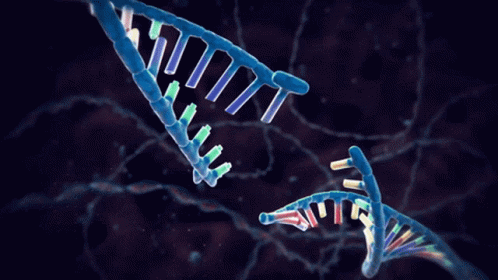
Let me throw one unpopular opinion at you: Gene Tech is actually not a bad. Genetically modified crops and what not are not bad and no, they will probably not give you cancer or anything of the like. In fact, if we want to save the planet and what not, we should totally embrace gene tech and gene editing.
With that I do not mean: "Edit human genes." Which is something that on one hand would be interesting and could have great promise, but on the other hand... would probably make the world so much world and lead to all sorts of eugenics.
No, I am talking first and foremost about editing the genes of some plants and maybe some insects.
See, I live in Germany, where a lot of GMO food is actually outlawed, which I find not good. Now, let me make one thing clear: Nobody should be able to copyright the genum of a crop. So fuck the hell off, Monsanto!
But gene editing can help us overcome many problems.
For once, we just have to face the facts: Climate is changing right now. It is changing and it creates bad harvests in many areas of the earth, because the crops are not adjusted for the new climate. In some areas it suddenly is too wet, in others it is too dry.
Humans have always edited the genes of plants and animals, of course. Just that we did it the very slow way by selective breeding them. Without selective breeding a wolf does not turn into a poodle.
Our ability to directly edit the genum of crops now allows us to quickly adust to the changing climate. Which might save a lot of people, if we allow it.
But apart from that, we can also do other things by gene editing.
We might be able to create plants, that are much better at storing CO2, than they would normally be. We are in fact able to create bacteria and algea, that eat micro plastics. We might in general be able to create bacteria able to dissolve garbage. We might be able to sustain plant species that otherwise might perish due to climate change.
And there might actually be some other things. See, we could maybe extinguish maleria thanks to gene tech. And we might be able to fight invasive species through it.
A lot of people in the conservation movement will be like "No, we should not mess with nature". But the thing is, that we already are messing with it.
Gene tech can help us to actually fix some of the problems we caused.
Again: Fucking Monsanto should not be allowed to copyright crops they created like this. But just because they are using it this way, does not mean, that the technology itself is horrible.
Opposing it just... does not get us anywhere.

841 notes
·
View notes
Text

#art#illustration#warhammer 40k#space marines#ultramarines#traditional painting#retro scifi#dark fantasy#armor gear#genetic modification#cyberpunk
154 notes
·
View notes
Text

I had to put in a lot of time and work for this piece but I was set on this concept. Just like how I created various posthuman species for my Centauri universe, I wanted to create a bunch of variants of for another major group in said universe, the Uplifted (hybrid animals with human level sapience). If humans need to modify/evolve to survive in different planets, it would make sense that the uplifted would need to do so as well in some cases. What I have are the cases where I imagine the most notable changes would occur.
The top row are the uplifted modified for high gravity environments. The Avian Parogions would have stronger bone structures and walk on their wings for additional support but wouldn't be too impacted by high gravity due to their lighter mass. Ironically, the higher air pressure on high gravity worlds would make flight easier for them. The mammoth-like Behemoths would have a more challenging time in high gravity. They counteract this by using their tusks and trunks as additional support that functions like a sled while their more flexible feet shuffles across the ground eliminating the need to lift their legs. The Dolphopods normally wouldn't be effected by gravity as they are normally in water and use technology to move on land. For high gravity worlds, locomotive technology is more problematic so the Dolphopods would be modified to have more flattened bodies that move across land similar to slugs and mudskippers. The Great Apes would be quadrapedic like Hi-G humans would which makes them resemble their less sapient ancestors.
The second row are low gravity inhabitants (with the exception of the Dolphopod). Low gravity Behemoths have a lighter build that makes them more resemble camels and large antelopes. Though adapted for lower gravity, they can tolerate earth gravity due to retaining sufficient bone and muscle density. Low gravity Parogions are largely similar to their base counterparts save for longer legs and proportionately larger wings to fly in thinner air pressure. Great apes in low gravity, like the Behemoths, possess a lighter build making them resemble gibbons from Earth with similar acrobatic agility. The Dolphopod depicted in the second row isn't modified for low gravity as there wouldn't be a need for it. Instead it's designed for fully terrestrial environments such as desert worlds, becoming a tripod with it's modified flippers and tail.
The third row are aquatic variants of which the dolphopods are excluded as they're naturally marine. All of them possess both gills and lungs as well as retain the ability to move on land for adaptive flexibility. The aquatic behemoth's physiology resemble an extinct order of marine mammals called the Desmostylia, while the aquatic Parogions resemble penguins and the aquatic Great Apes are more frog-like.
The last row are the super soldier variants of the uplifted, part of a group I call the Irradiated. Each member of the Irradiated is genetically and cybernetically modified to be at their peak physiology and able to withstand extreme environments including hi-radiation (hence the name). I have each of them partially armored to showcase some of their distinct physical features and are to scale with all the other uplifted (the irradiated Behemoth stands at 5.2m or 17.1ft at the shoulder).
Some of these designs may evolve over time and I might include more if I can think of any unique designs with a good reason for them.
As always, comments and critiques are welcome.
#my art#digital art#digital color#digital illustration#creature design#character design#speculative biology#speculative evolution#science fiction#scifi#hybrids#animals#genetic modification#ape#elephant#bird#dolphin#mammals#avian#cephalopod#aquatic#high gravity#low gravity#radiation#super soldier#uplifted#concept art#conceptual#concept#concept design
20 notes
·
View notes
Text

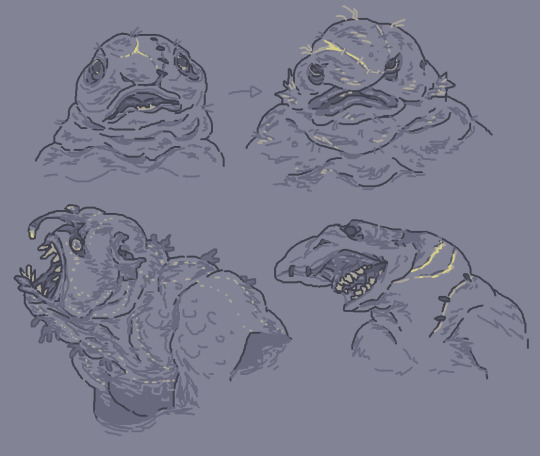
My personal takes on what bioshock "big daddy's" look like underneath. After all, with ADAM... the flesh becomes clay. What excuse do we have not to sculpt, and sculpt, and sculpt, until the job is done?
#i like to think they vary wildly especially between models/suits but also individuals#for example i think delta is closer to the early stage one#still sentient and capable of choice and conscious#but years unchecked the slug models them after its own bodyplan but the initial changes to psyche stay just...deterioates significantly#they become more animalistic and based on instinct and emotion. they know their bond to the little sisters and thats it#anyway yea im kin with these fuckn things#my art#bioshock#big daddy#mr bubbles#body horror#monster#genetic modification#bioshock 2#bioshock bouncer#bioshock rosie#bioshock rumbler#bioshock mr bubbles#bioshock big daddy#deep sea creatures#blobfish#anglerfish#goblinfish#sea slug#beluga whale#horror
60 notes
·
View notes
Text
The GMO petunias are currently only available for sale in the contiguous USA (with full USDA approval), they're still impressive. The output is said to be on par with moonlight, and is dependent upon the health of the plant. The fastest growing parts will also be the brightest glowing.
14 notes
·
View notes
Text
“Solving the food-and-climate crisis will require going back to basics, finding ways to make our mix of crops broader rather than even narrower. “We need to think about how domestication worked in general, thousands of years ago,” Lippman says. Back then, early forms of modern crops could be taken out of their original geographical range and grown in new places because farmers and breeders selected mutations that allowed those adaptations to occur. We can do that again, adding overlooked crops to the mainstream food supply and working to broaden the agricultural gene pool after centuries of going the other way. That adjustment will help ensure that farmers will have crops suitable for the extreme growing conditions they are likely to encounter in the coming decades.
“We haven’t done a very good job of maximizing diversity,” Lippman says. “And diversity is what you need to win the battle of climate change.”
92 notes
·
View notes
Text
FDA Finds Unexpected Antibiotic Resistance Genes in 'Gene-Edited' Dehorned Cattle
19 notes
·
View notes
Text
Duckweed Power!
There are a number of issues with existing biofuels (usually soybean) - e.g. many crops go to biofuels instead of food, an biofuels are taking up more than 100 million acres of agricultural land.
Duckweed is common in every continent, grows fast and grows in water (including polluted water from animal agriculture - potentially cleaning these waters up a little), which means it doesn't compete with food agriculture for space.
An issue with genetically engineering biofuel plants is that the plants usually produce a lot of fuel at the start, then stop growing completely
A team of scientists, whose research is featured in the article above, have devised a method to allow duckweed to produce 7 times more biofuels. They insert a gene that is inactive into the duckweed, allow the plant to grow fully, before activating that gene for them to produce biofuels.
For more similar articles, see my tag #aslzoology or there's also a link on my blog
#aslzoology#asl zoology#zoology articles#biofuels#studyblr#duckweed#engineering#stem#genetic modification#environment#greta thunberg#climate change#STEM#women in STEM#stemblr
22 notes
·
View notes
Video
Dr. Tara O’Toole on Bioweapons
Dr. Tara O'Toole, Senior Fellow and Executive Vice President, In-Q-Tel (IQT)
"The Future of Synthetic Biology, Pandemics, and their Impact on Economies and National Security" - July 15, 2020
"A weapon that would make everybody go to sleep or feel extremely anxious is not out of the question..."
Full Video Available on The Ministry of Gnosis Telegram Channel
14 notes
·
View notes
Text
Dr Jane calls out Marjorie Taylor Greene who is ve$ted in big pharma
Anybody out there who watched their loved ones die in the hospital on forced #Remdesivir infusions...
Want to defend Marjorie Taylor Greene @mtgreenee to me now that you know she owns stock in the company that made the drug that killed your loved one?
How will she impartially investigate companies in which she has a direct financial interest?
View and subscribe to my work on GMO's, the Bioweapons, & The Great Reset at Rumble.com/c/drjaneruby


Oh L👀K! Among @mtgreenee numerous pharmaceutical stock holdings, particularly the companies that made billions killing American civilians and soldiers with the C 19 Bioweapon shots, she actually OWNS CRSPR GENE EDITING stock!!
Yes, the technology that enables transfection of the synthetic toxic gene codes into your human genome! Think she doesn't have a conflict of interest??

#majorie taylor greene#dr jane#Big pharma#covid truth#Remdesivir#CRSPR#Human gnome#genetic modification#conflict of interest
4 notes
·
View notes
Text
trek thoughts: Vulcans are geneticly modified, perhaps?
Vulcans are too well evolved for their planet, like, evolutionary adaptions to the environment make sense of course, but they just seem like theyre too adapted. I mean, for example, T'pol told Cp. Archer that she didnt need sunglasses because her inner eyelids protected her eyes; humans also evolved on planet revolving a giant ball of molten rock and plasma but we didnt evolve build in sunglasses.
Vulcans also possess more strength than should be necessary. Why are they 3+ times stronger than the average human? Partially because of higher gravity, possibly partially because of cultural differences; Vulcans seem to place a higher value/need on being physically strong and healthy, likely the need to keep others from taking their mate is a strong evolutionary catalyst, but I feel like theres more.
What about their telepathic abilities? How does a species evolve something like that? Especially given that their telepathy coupled with their violent intense emotions makes for what one would think is a bad combination. It makes sense they almost blew themselves up.
#star trek#Star trek theory#star trek headcanon#vulcans#vulcan#vulcan culture#genetic modification#Vulcan history#Genetic augment#Star trek augment#Augment
15 notes
·
View notes
Text

Happy Valentine's Day everyone!!! Following the living Christmas tree, I figured I'd create some flowers genetically modified for the occasion (the sci-fi fan inside me couldn't resist). I hope you all have a wonderful day with your valentines.
As always, comments and critiques are welcome.
#valentine#valentine's day#greeting card#greeting cards#flower#flowers#heart#plants#potted plants#holiday#my art#digital art#digital color#digital illustration#science fiction#scifi#genetic modification
5 notes
·
View notes
Text
Occasionally fantasize about purchasing a CRISPR kit on the internet and dedicating my life to creating the first true blue rose. Has anybody started doing this yet
#crispr#genetics#biohacking#genetic modification#gmo#plants#roses#blue rose#blue roses#garden#gardening#flowers
3 notes
·
View notes
Photo
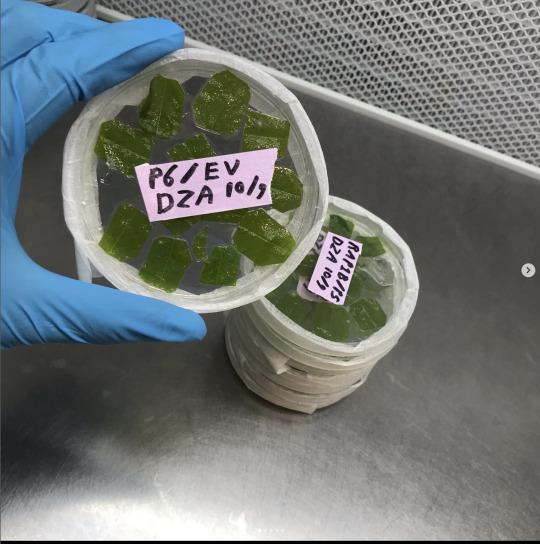

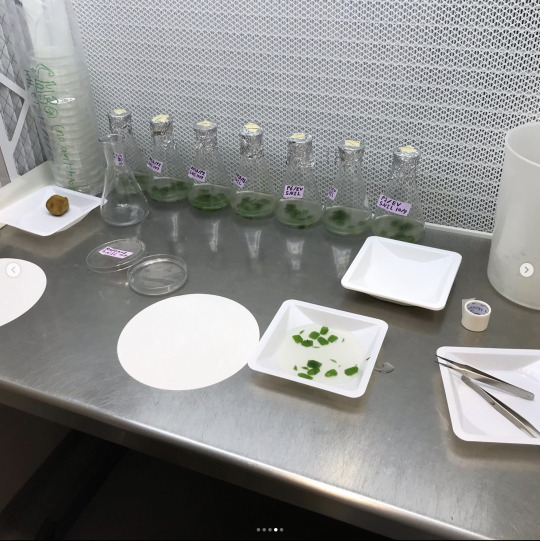

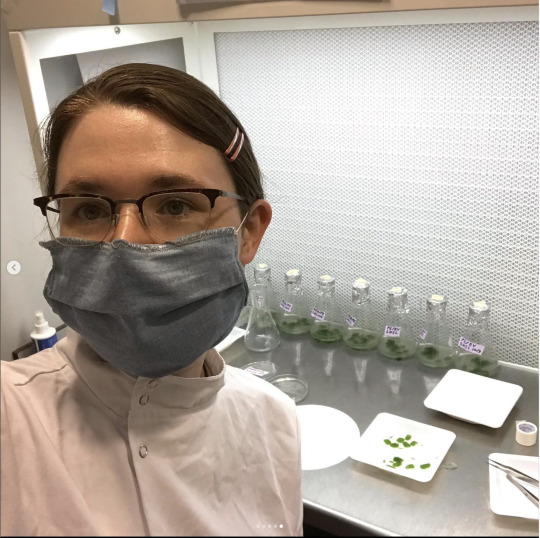
Take a look at genetic engineering in action... these photos show the first steps in creating a genetically modified plant.
The process begins with a bacteria called Agrobacteria tumefaciens. This bacteria is a domesticated version of a wild bacteria that causes tumours in trees by inserting pieces of the bacteria’s DNA into the host’s cells. If a gene of interest is added to the Agrobacteria, the bacteria will add this gene into plant tissue. In these photos, I am infecting pieces of Medicago truncatula plant tissue with Agrobacteria carrying the genes for aphid resistance.
The plant tissue pieces are placed on nutrient gel plates so the bacteria can grow for a few days. The pieces are then transferred to plates with antibiotics to kill off the bacteria. Otherwise the bacteria would overgrow and destroy the plant tissue. I’ll show the next steps in tissue culture in a future post!
#science#Science and Technology#scientists#mad science#katia plant scientist#plant science#scientist#Mad Scientist#female scientist#women in science#women in stem#women in uniform#lab coat#laboratory#laboratório#molecular biology#Biotechnology#biotech#genetics#genetic modification#research#researcher#tissue culture#plant scientist#plant biology#agrobacteria#medicago#dna#petri dish#flasks
19 notes
·
View notes
Text
Indolent

24 notes
·
View notes
Text
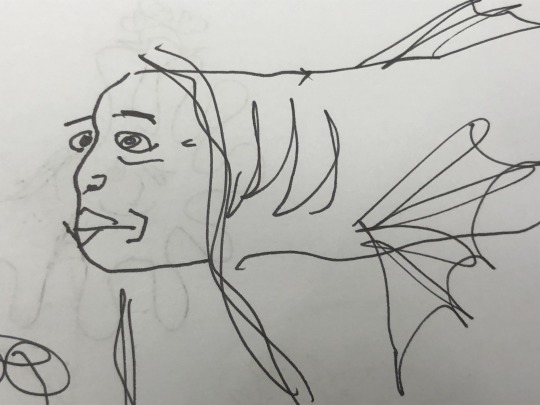
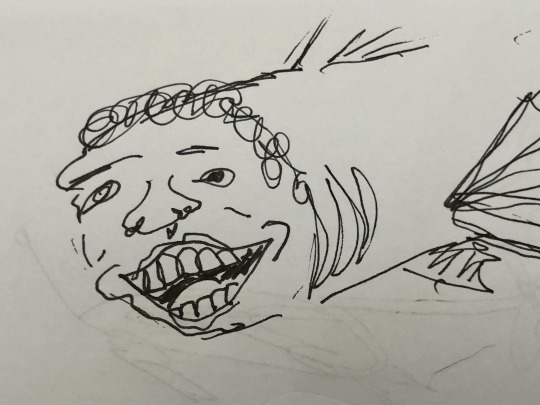
Near New Welcome, in the city of Watergate, it is a common funerary custom to commission a “death mask fish”, genetically modified to have the deceased’s face. These fish swim with the others in the hollow cube of water that surrounds the entire city.
7 notes
·
View notes